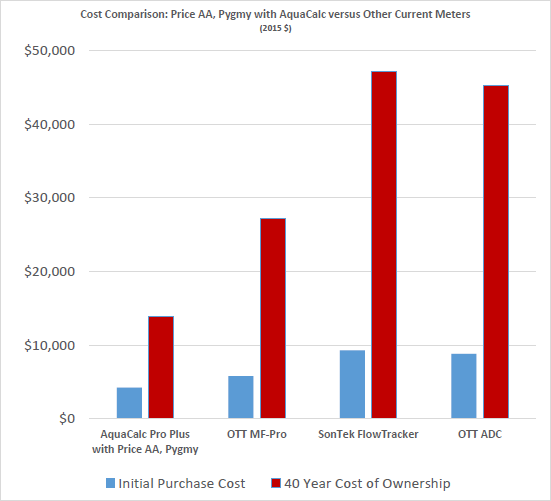 Loading... Please wait...
Loading... Please wait...Hydrological Equipment
NEWS RELEASE
Cost and Accuracy Comparisons

Mechanical Current Meter System with AquaCalc Versus Other Point Velocity Discharge Systems
Download PDF
Meteorological Instruments
Meteorological Measurements are made to characterize the climate of that location and to supply meteorological information related to hydrologic processes. Meteorological data are especially important on hydrologic research because the climate and weather of an area exert a profound influence on most hydrologic processes. Precipitation is directly related to river runoff forecasting and is obviously a key component for any hydrologic modeling. Wind speed and wind direction are at least partial determinants of rain or snow distribution over a watershed, and temperature data are vital to parameters such as soil freezing or snow melt. The hydrologic regime is so intimately related to climactic factors that almost every hydrologic study has a meteorological aspect.
The key meteorological parameters necessary for hydrologic study are:
Precipitation - includes any moisture falling from the atmosphere in liquid or frozen form. Collected by rain gages, both non-recording, which retains the total precipitation between observations and recording which gives time of precipitation so intensities can be computed and transmitting rain gage sites for sending data to a central station for analysis.
Air Temperature- is commonly measured because of its importance to evaporation, transpiration, soil conditions and snowmelt.
Humidity - of the air near the surface has a definite influence on the rate of evaporation from lakes and on evapotranspiration from land areas.
Wind - Hydrologically, wind influences the magnitude of evapotranspiration and windspeed and direction influence rain gage catch and snowfall drift. Anemometers are designed to measure windspeed and direction.
Solar Radiation - It provides the energy that drives regional and global hydrologic cycles. Radiation is the most important factor in the evaporation and transpiration processes. Pyranometers and Net Radiometers are used to measure solar radiation.
Evaporation - Rate of evaporation or potential evapotranspiration is dependent on the temperature of the evaporating surface and the wind flow over the water surface and is one of the hydrologic processes most influenced by climactic conditions. It can be measured by lysimeters but is best measured by the Type A Evaporation Pan.
Barometric Pressure - This is required for the potential evapotranspiration and dew points. Water level in a confined aquifer will be affected by barometric pressure.
Soil Temperature- measurement indicate the sensible heat stored in the soil and are important to hydrologic investigations as soil freezing can drastically reduce infiltration rates of soil causing significant change in runoff in a watershed.
Infiltration - Movement of water through the soil which indicates the water retention capacity or saturation thus predicting surface water run off. Infiltration ring tests are a common predictor of infiltration.
